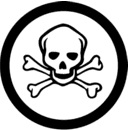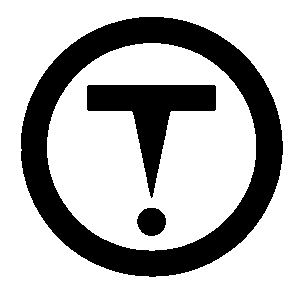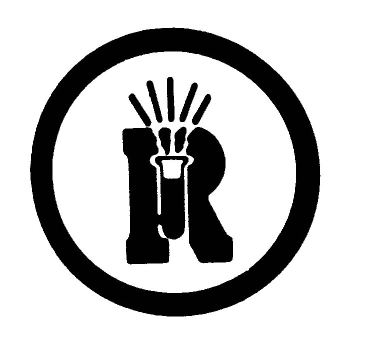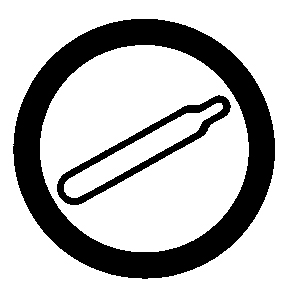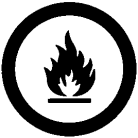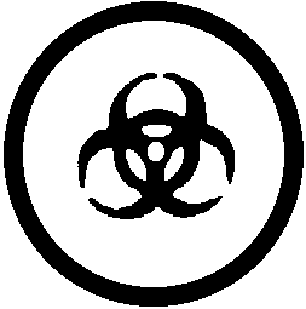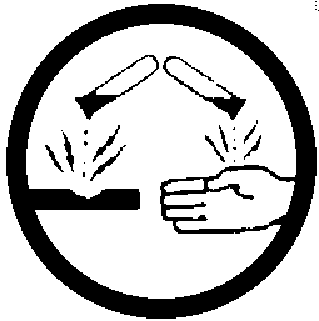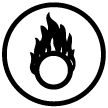Occupational Safety And Health Quiz: MCQ Trivia
(123).jpg)
What do you understand about occupational safety and health? Do you think you can pass this quiz? Occupational health and safety in public health studies developments in illnesses and injures in the worker population and recommends and implements strategies and rules to prevent them. The main focus is on manual labor occupations. Take this quiz and see how much you know about occupational safety and health.
- 1.
You have the right to know the hazards in your job. Your employer or supervisor must provide you with the information you need to work safely.
- A.
True
- B.
False
Correct Answer
A. TrueExplanation
This statement is true because according to workplace safety regulations, employees have the right to be informed about the hazards associated with their job. It is the responsibility of the employer or supervisor to provide this information to ensure that employees can work safely. By knowing the hazards, employees can take appropriate precautions and follow necessary safety protocols to prevent accidents or injuries.Rate this question:
-
- 2.
The worker is responsible to work safely including not fooling around on the job, reporting unsafe conditions immediately, wearing the required Personal Protection Equipment (PPE) or clothing properly, knowing the emergency procedures, and reporting all injuries at the workplace immediately to your supervisor.
- A.
True
- B.
False
Correct Answer
A. TrueExplanation
The statement is true because it highlights the various responsibilities of a worker to ensure their safety and the safety of others in the workplace. These responsibilities include not engaging in any playful or non-serious behavior while working, promptly reporting any unsafe conditions they come across, correctly wearing the necessary Personal Protection Equipment (PPE) or clothing, being aware of the emergency procedures, and immediately reporting any workplace injuries to their supervisor. By adhering to these responsibilities, workers can contribute to maintaining a safe and secure working environment.Rate this question:
-
- 3.
Your employer or supervisor can only discipline you for refusing to do a task that you believe is unsafe after the Ministry of Labour (MOL) has indicated a return to work.
- A.
True
- B.
False
Correct Answer
A. TrueExplanation
Your employer or supervisor can discipline you for refusing to do a task that you believe is unsafe after the Ministry of Labour (MOL) has indicated a return to work. This implies that once the MOL has given the green light for work to resume, your employer has the authority to take disciplinary action against you if you refuse to perform a task that you consider unsafe. It is important to prioritize safety, but it is also crucial to follow the directives of the MOL and adhere to your employer's guidelines once they have been given the go-ahead.Rate this question:
-
- 4.
The number one cause of injury to workers is slips and falls.
- A.
True
- B.
False
Correct Answer
A. TrueExplanation
Slips and falls are indeed the number one cause of injury to workers. This is because workplaces often have hazardous conditions such as wet floors, uneven surfaces, or cluttered walkways, which increase the risk of slips and falls. These accidents can result in various injuries, ranging from minor bruises to more severe fractures or head injuries. Therefore, it is crucial for employers to prioritize safety measures and implement proper precautions to prevent such incidents and protect their workers.Rate this question:
-
- 5.
Workers in Ontario have three basic rights when it comes to Health and Safety. One of them is the right to shut down an unsafe workplace.
- A.
True
- B.
False
Correct Answer
B. FalseExplanation
Workers in Ontario do have rights when it comes to Health and Safety, but the statement that they have the right to shut down an unsafe workplace is false. While they do have the right to refuse unsafe work, this does not mean they can shut down the entire workplace. Refusing unsafe work means that the worker can refuse to do a specific task or job that they believe is unsafe, but it does not give them the authority to shut down the entire workplace.Rate this question:
-
- 6.
Sharing cigarettes, eating utensils, drink containers/straws, and bits of food does not increase your risk of exposure to communicable diseases.
- A.
True
- B.
False
Correct Answer
B. FalseExplanation
Sharing cigarettes, eating utensils, drink containers/straws, and bits of food can actually increase your risk of exposure to communicable diseases. These items can easily transfer saliva, bacteria, and viruses from one person to another, increasing the likelihood of transmitting infections such as colds, flu, and even more serious diseases like hepatitis or HIV. It is important to avoid sharing these items to minimize the risk of spreading communicable diseases.Rate this question:
-
- 7.
Workplace safety is based on staff recognizing, assessing, and controlling hazards in the workplace.
- A.
True
- B.
False
Correct Answer
A. TrueExplanation
Workplace safety is indeed based on staff recognizing, assessing, and controlling hazards in the workplace. This means that employees should be able to identify potential dangers, evaluate their severity, and take appropriate measures to minimize or eliminate them. By being aware of hazards and taking necessary precautions, employees can create a safer work environment for themselves and their colleagues. Therefore, the statement "Workplace safety is based on staff recognizing, assessing, and controlling hazards in the workplace" is true.Rate this question:
-
- 8.
Spills of bodily fluids should be cleaned immediately by: -Using disposable absorbent material to clean up the spill -Scrubbing surface with soap and water -Spraying a 1:10 solution of chlorine to the water -Soaking for ten minutes -Rinsing and drying of the surface
- A.
True
- B.
False
Correct Answer
A. TrueExplanation
The correct answer is true because spills of bodily fluids should be cleaned immediately to prevent the spread of infection. Using disposable absorbent material helps to contain the spill and prevent further contamination. Scrubbing the surface with soap and water helps to remove any remaining bacteria or viruses. Spraying a 1:10 solution of chlorine to the water helps to disinfect the area. Soaking for ten minutes allows the disinfectant to effectively kill any pathogens. Finally, rinsing and drying the surface ensures that it is clean and ready for use.Rate this question:
-
- 9.
Frequent and thorough handwashing with soap and water is an important way to decrease your risk of contracting or transmitting an infectious disease.
- A.
True
- B.
False
Correct Answer
A. TrueExplanation
Regular and thorough handwashing with soap and water is an effective measure to reduce the chances of getting or spreading an infectious disease. This practice helps to remove germs and bacteria from the hands, preventing their transmission to others or to oneself through touching the face or other surfaces. By maintaining good hand hygiene, individuals can significantly lower the risk of contracting or spreading infections, making the statement "True."Rate this question:
-
- 10.
Overuse of antibacterial soap increases susceptibility to contagious diseases.
- A.
True
- B.
False
Correct Answer
A. TrueExplanation
Overusing antibacterial soap can lead to an increase in susceptibility to contagious diseases because it can disrupt the natural balance of bacteria on the skin. Antibacterial soaps contain chemicals that kill both harmful and beneficial bacteria, which are essential for maintaining a healthy immune system. When the beneficial bacteria are reduced, it allows harmful bacteria to multiply and cause infections. This weakened immune system makes individuals more susceptible to contagious diseases. Therefore, the statement "Overuse of antibacterial soap increases susceptibility to contagious diseases" is true.Rate this question:
-
- 11.
When performing First Aid you should wear gloves, use a face mask for resuscitation, change gloves with every new casualty, and dispose of gloves and other soiled materials immediately.
- A.
True
- B.
False
Correct Answer
A. TrueExplanation
When performing First Aid, it is important to wear gloves to protect both the rescuer and the casualty from potential infections or contaminants. Using a face mask for resuscitation helps to prevent the transmission of any airborne diseases. Changing gloves with every new casualty ensures that there is no cross-contamination between different individuals. Disposing of gloves and other soiled materials immediately helps to maintain a clean and safe environment. Therefore, all the statements mentioned in the answer are true and should be followed while performing First Aid.Rate this question:
-
- 12.
If a needle has pricked someone, they need to go immediately to the nearest hospital emergency department with the needle in a clean, puncture-resistant container. An incident report or WSIB report must be completed.
- A.
True
- B.
False
Correct Answer
A. TrueExplanation
The statement is true because if someone has been pricked by a needle, it is important for them to seek immediate medical attention at the nearest hospital emergency department. This is necessary to ensure proper medical care and to minimize the risk of infection or other complications. Additionally, it is advised to keep the needle in a clean, puncture-resistant container to prevent any further accidents or injuries. Completing an incident report or WSIB report is also necessary to document the incident and ensure proper follow-up actions are taken.Rate this question:
-
- 13.
A Material Safety Data Sheet (MSDS) identifies the hazardous ingredients, protective measures, and emergency procedures pertaining to a specific substance. The information must be less than three years old and the sheet must be taken to the hospital with staff if they have exposure to any of these products.
- A.
True
- B.
False
Correct Answer
A. TrueExplanation
The Material Safety Data Sheet (MSDS) is a document that provides important information about hazardous substances. It includes details about the ingredients, protective measures, and emergency procedures related to a specific substance. It is necessary for the information on the MSDS to be up to date, typically less than three years old. In case of exposure to any of these products, it is important for staff to take the MSDS to the hospital, as it contains crucial information that can assist medical professionals in providing appropriate treatment. Therefore, the statement "True" is correct.Rate this question:
-
- 14.
Identify the following symbol.
- A.
Compressed Gas.
- B.
Flammable and Combustable.
- C.
Oxidizing.
- D.
Materials causing Immediate/Serious Toxic effects.
- E.
Materials causing other Toxic effects.
Correct Answer
D. Materials causing Immediate/Serious Toxic effects.Explanation
The given symbols represent different hazards associated with certain materials. The symbol "Materials causing Immediate/Serious Toxic effects" indicates that the substance can cause immediate or serious harm to health if exposed to it. This symbol is used to warn individuals about the potential toxicity of the material and the need for caution when handling or being in proximity to it.Rate this question:
-
- 15.
Identify the following symbol.
- A.
Biohazardous.
- B.
Corrosive.
- C.
Materials causing other Toxic effects.
- D.
Dangerously Reactive Materials.
- E.
Materials causing Immediate/Serious Toxic effects.
Correct Answer
C. Materials causing other Toxic effects.Explanation
The symbol described in the question represents materials that cause other toxic effects. This symbol is typically used to warn individuals about the potential dangers associated with these materials, which may not cause immediate or serious toxic effects but can still be harmful. It is important to handle and dispose of such materials with caution to avoid any adverse health effects.Rate this question:
-
- 16.
Identify the following symbol.
- A.
Oxidizing.
- B.
Compressed Gas.
- C.
Corrosive.
- D.
Dangerously Reactive Materials.
- E.
Flammable and Combustable.
Correct Answer
D. Dangerously Reactive Materials.Explanation
The symbol described in the question represents Dangerously Reactive Materials. This symbol is used to indicate substances that can react violently with water or other chemicals, leading to explosions or the release of toxic gases. It serves as a warning to handle these materials with extreme caution to prevent accidents or harm.Rate this question:
-
- 17.
Indentify the following symbol.
- A.
Compressed Gas.
- B.
Material causing other Toxic effects.
- C.
Corrosive.
- D.
Flammable and Combustable.
- E.
Biohazardous.
Correct Answer
A. Compressed Gas.Explanation
The given symbols represent different hazardous materials. The correct answer, "Compressed Gas," is indicated by the symbol that represents a gas cylinder. This symbol is used to identify materials that are stored under pressure and can cause harm if not handled properly. The other symbols represent materials causing toxic effects, corrosive substances, flammable and combustible materials, and biohazardous materials.Rate this question:
-
- 18.
Identify the following symbol.
- A.
Corrosive.
- B.
Oxidizing.
- C.
Biohazardous.
- D.
Material causing Immediate/Serious Toxic effects.
- E.
Flammable and Combustable.
Correct Answer
E. Flammable and Combustable.Explanation
The given symbols represent different types of hazardous materials. The symbol "Flammable and Combustible" is used to identify materials that are easily ignited and can catch fire or explode in the presence of an ignition source. This symbol is usually displayed on containers or signs to warn people about the potential fire hazard associated with these materials.Rate this question:
-
- 19.
Identify the following symbol.
- A.
Materials causing other Toxic effects.
- B.
Biohazardous.
- C.
Materials causing Immediate/Serious Toxic effects.
- D.
Flammable and Combustable.
- E.
Corrosive.
Correct Answer
B. Biohazardous.Explanation
The symbol being described in the given answer is the biohazardous symbol. This symbol is used to indicate materials that are potentially harmful to human health, particularly those that may cause infections or diseases. It is commonly seen in laboratories, medical facilities, and other places where biohazardous materials are handled. The symbol consists of a black biohazard symbol on a yellow background, making it easily recognizable and distinct from other safety symbols.Rate this question:
-
- 20.
Identify the following symbol.
- A.
Biohazardous.
- B.
Flammable and Combustable.
- C.
Oxidizing.
- D.
Corrosive.
- E.
Dangerously Reactive Materials.
Correct Answer
D. Corrosive.Explanation
The symbol described in the question is "Corrosive." This symbol is used to identify substances that have the ability to corrode or destroy materials they come into contact with, including living tissues. This symbol serves as a warning to handle these substances with caution and to take appropriate safety measures to prevent harm or damage.Rate this question:
-
- 21.
Identify the following symbol.
- A.
Dangerously Reactive Materials.
- B.
Flammable and Combustable.
- C.
Oxidizing.
- D.
Corrosive.
- E.
Compressed Gas.
Correct Answer
C. Oxidizing.Explanation
The symbol being referred to in the question is the symbol for "Oxidizing." This symbol is used to indicate substances that have the potential to cause or enhance combustion of other materials. Oxidizing materials are known to release oxygen or other oxidizing substances and can pose a fire hazard if not handled properly. The symbol typically consists of a flame over a circle, representing the potential for fire.Rate this question:
-
Quiz Review Timeline +
Our quizzes are rigorously reviewed, monitored and continuously updated by our expert board to maintain accuracy, relevance, and timeliness.
-
Current Version
-
Mar 22, 2023Quiz Edited by
ProProfs Editorial Team -
Dec 07, 2009Quiz Created by
Shawoona
- Abdomen Quizzes
- Addiction Quizzes
- Aging Quizzes
- Arthritis Quizzes
- Beauty Quizzes
- Blood Quizzes
- Body Quizzes
- Bone Quizzes
- Brain Quizzes
- Child Health Quizzes
- Dermatology Quizzes
- Digestive System Quizzes
- Disease Quizzes
- Fertility Quizzes
- First Aid Quizzes
- Hair care Quizzes
- Health And Nutrition Quizzes
- Health And Wellness Quizzes
- Health Policy Quizzes
- Health Psychology Quizzes
- Health Worldwide Quizzes
- Hearing Quizzes
- Heart Quizzes
- Hospital Quizzes
- Illness Quizzes
- Injury Quizzes
- Kidney Quizzes
- Liver Quizzes
- Lung Quizzes
- Medical Quizzes
- Mental Health Quizzes
- Nose Quizzes
- Nutrition Quizzes
- Obesity Quizzes
- Ophthalmology Quizzes
- Patient Quizzes
- Patient care Quizzes
- Pharmacy Quizzes
- Pregnancy Quizzes
- Puberty Quizzes
- Public Health Quizzes
- Respiratory System Quizzes
- Sleep Quizzes
- Stress Quizzes
- Surgery Quizzes
- Surgical Instruments Quizzes
- Throat Quizzes
- Weight Quizzes
- Wellness Quizzes
 Back to top
Back to top



